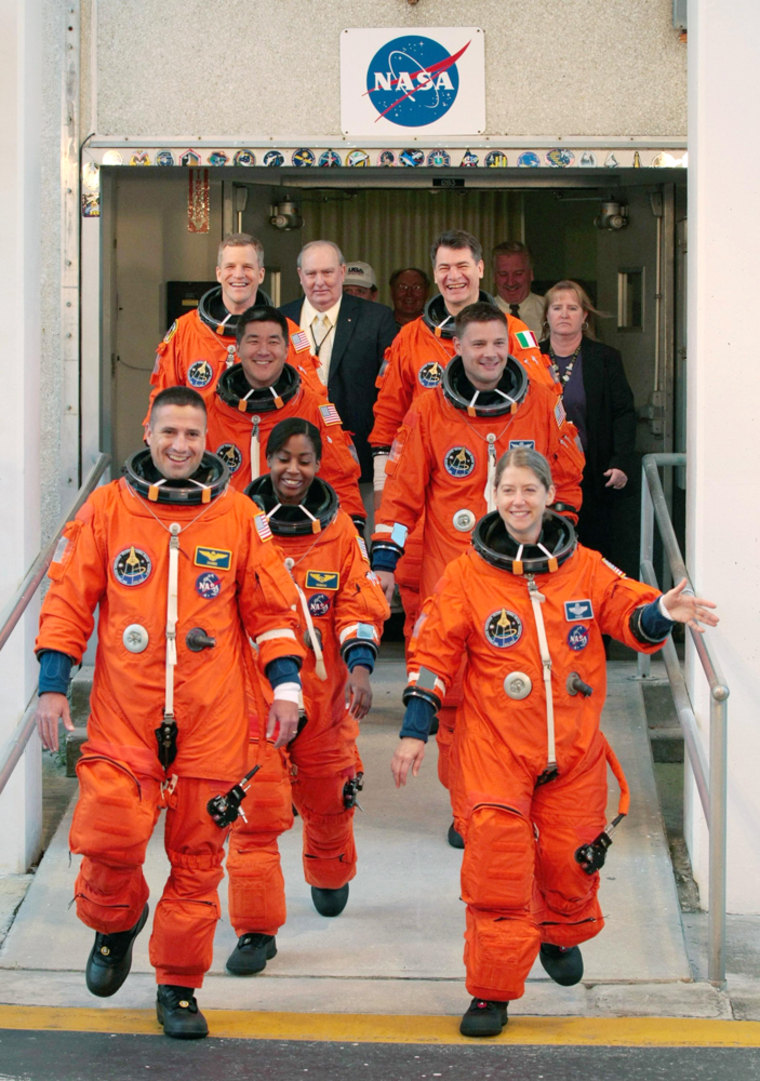NASA is studying a possible problem with the thermal shielding on Discovery’s wings that could force a delay in this month’s launch.
Discovery’s seven astronauts climbed aboard the shuttle at the launch pad Wednesday for a practice countdown. At the same time, shuttle managers discussed whether three of the 44 reinforced carbon panels that line the edges of Discovery’s wings should be replaced.
The shuttle would have to be returned to the hangar for that kind of work, which would mean a launch delay. Discovery is scheduled to lift off Oct. 23 with a new live-in compartment for the international space station.
NASA spokesman Allard Beutel said the outer coating on three of the wing panels shows degradation, an issue that the NASA Engineering and Safety Center has been reviewing for the past several months.
The safety center recommended Wednesday that the three panels be replaced before Discovery flies. But the shuttle program is leaning toward leaving them alone, for now, and proceeding with the launch based on data from other engineers, Beutel said.
Beutel said engineers do not know what is causing this coating to weaken.
So far, Beutel said, the problem has not compromised the underlying strength of the panels, which are subjected to as much as 3,000 degrees Fahrenheit (1,650 degrees Celsius) during re-entry. He said some engineers believe the problem won’t worsen because the panels have flown in space at least twice and did not experience any further degradation.
A decision on what to do about these potentially flawed panels — if anything — will not be made until next week’s flight readiness review by top agency officials.
Shuttle program manager Wayne Hale ordered more data to be collected over the upcoming week.
NASA has improved and expanded its testing of shuttle wing panels ever since the 2003 Columbia disaster. A hole in Columbia’s left wing, created by a chunk of fuel-tank foam during liftoff, let in the hot atmospheric gases of re-entry. The wing melted from the inside out.
